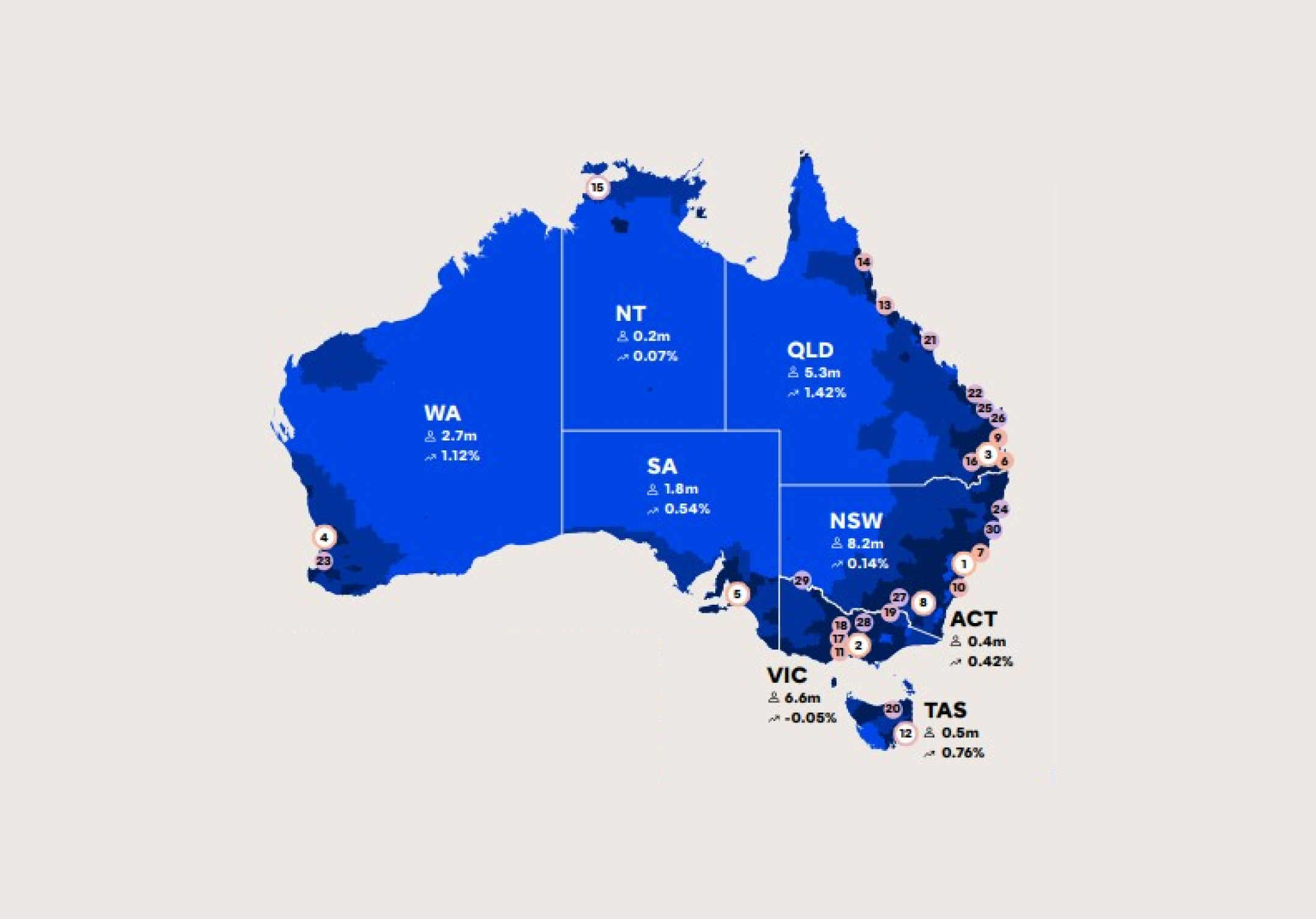Jobs growth and future proofing careers

The future of work is not all about robotics, automation and new technologies. Data from the Department of Jobs and Small Business reveals two thirds of new jobs by 2023 will be in four sectors. That is, Healthcare and Social Assistance; Professional, Scientific and Technical Services; Construction; and Education and Training.
Not yet the rise of the robots – Top 4 industries over the next 5 years
Sectors set to experience job growth are driven by demographic factors rather than just technological factors. We are not being taken over by robots and artificial intelligence just yet. These factors at play include an ageing population, increased demand for housing and infrastructure. This is as a result of population growth and an increasing number of school and tertiary aged children.
The top 4 industries projected to make up two-thirds (66.4%) of total employment growth over the next 5 years (and the percentage increase in jobs they will experience) are:
- Health Care and Social Assistance (14.9%)
- Professional, Scientific and Technical Services (10.2%)
- Construction (10%)
- Education and Training (11.2%)
By contrast, the 4 industries projected to experience declines in employment or minimal growth over the next 5 years are:
- Wholesale Trade (- 2.7%)
- Agriculture, Forestry and Fishing (- 0.4%)
- Manufacturing (0.9%)
- Mining (2.4%)
Industries experiencing a decline in employment rates such as Wholesale trade is due to the trend in consumers going straight to the source, cutting out intermediaries. Today’s thriving direct-to-consumer (D2C) brands are providing quality products at affordable prices. Combined with price comparison websites and online shopping, is transforming the traditional sales supply chain.
“When we think about jobs of the future, we tend to think about drone pilots and app developers, but its nurses, teachers and construction workers. The effect of automation has a longer-term time frame than many think. There is time to plan the next phase of one’s career path. I would look for a job that involves interaction with people. Jobs relying on people skills, creativity, and which require advanced decision-making will be in demand.” – Mark McCrindle.
The top 10 occupations by growth
Here are the top 10 occupations with the largest projected employment growth rates over the next 5 years until May 2023.
- Carers and Aides (23.6%)
- Sports and Personal Service Workers (16.7%)
- Health Professionals (16.3%)
- ICT Professionals (16%)
- Food Trades Workers (14.2%)
- Hospitality Workers (13.8%)
- Legal, Social and Welfare Professionals (13%)
- Health and Welfare Support Workers (12.7%)
- Skilled Animal and Horticultural Workers (11.6%)
- Specialist Managers (10.6%)
Clerical administrative jobs and back-office roles are all set to decline with personal assistant and secretarial jobs to see negative growth of 20.5%. Sales workers and Machine and Stationary Plant Operators are also facing declines as technology replaces these roles.
“It is prudent for young people and their parents to take these projections into account as they plan school and university subjects and career paths. The advice to ‘just follow your passion’ could be enhanced by looking at what jobs are experiencing growth trends to line up one’s passion with reality.” – Mark McCrindle
“The average tenure in a job is currently three years, which means that a school leaver today could have up to 17 jobs across 5 careers in their lifetime. As our younger generations prepare for the world of work, and those of us already in it consider career changes, it is important that we all consider upskilling and retraining. Investing in transferable skills such as communication skills and management and leadership skills is key to future-proofing roles.” – Mark McCrindle.
Education important to future-proofing
Education is a worthwhile investment, as 90% of employment growth will be in jobs that require skill levels 1-4. Higher skill occupations show the strongest projected employment. As does occupations which require some training but also have a strong emphasis on human interactions.
The projected employment growth for those with a bachelor’s degree or higher is 10% over the next 5 years. However, there is good news for those less keen on spending the next 3-6 years after school at University piling up a HECS debt. The projected employment growth rate for completing Cert II or III (e.g. community and personal service workers) is not far behind at almost 8%.
Women closing the workforce gap, and full-time roles to grow faster than part time roles
The rate of growth for women in the workplace continues to outpace the rate of growth for men in both full-time and part-time employment. Key factors in the increased participation rate include higher education rates among women, child care support and growth in traditionally female dominated service sectors.
Over the next 5 years to May 2023 females will account for 58% of projected employment growth. Overall, female employment is projected to grow by 8.8% compared with 5.6% for males.
For media commentary contact us on 02 8824 3422 or at [email protected]




